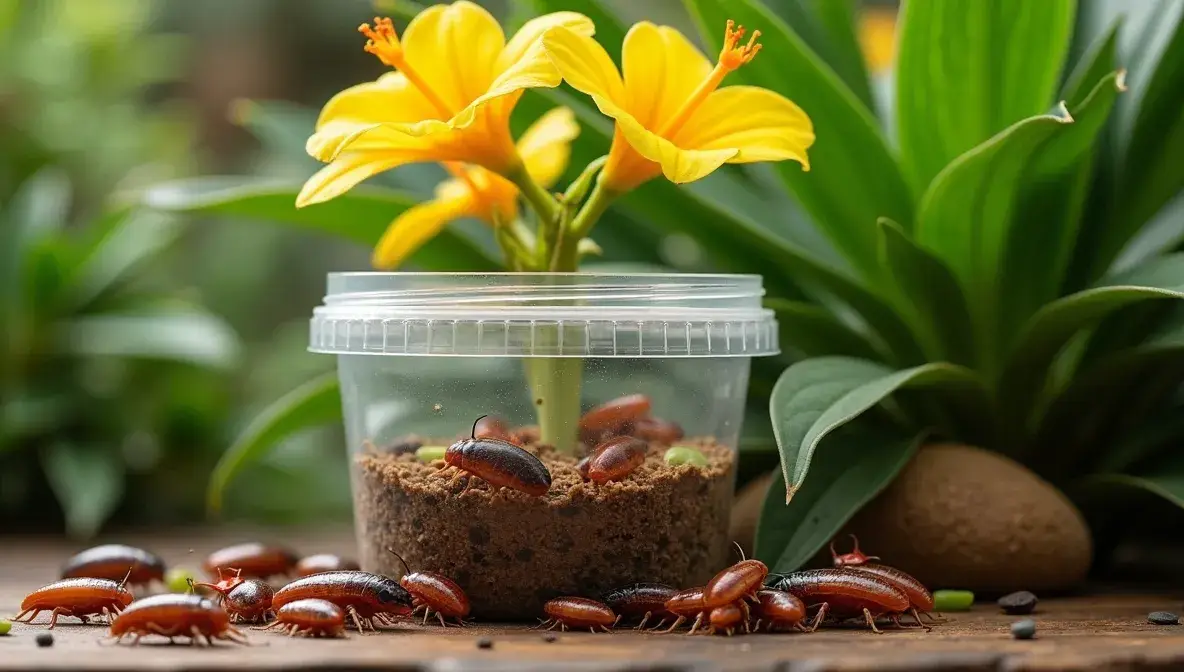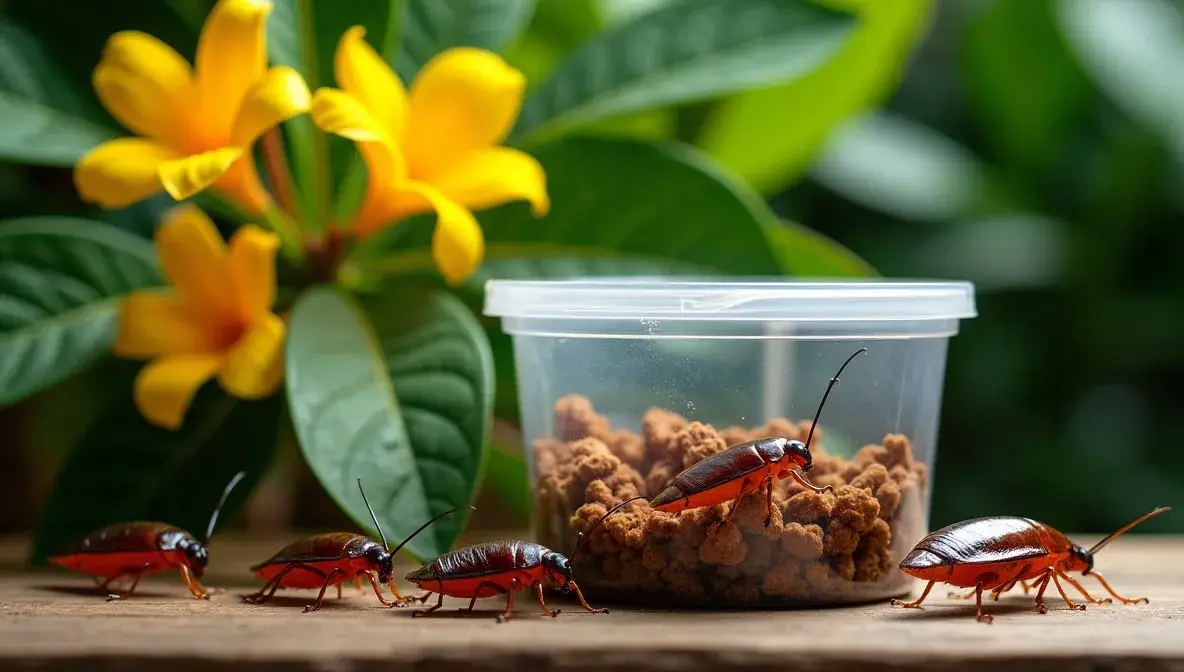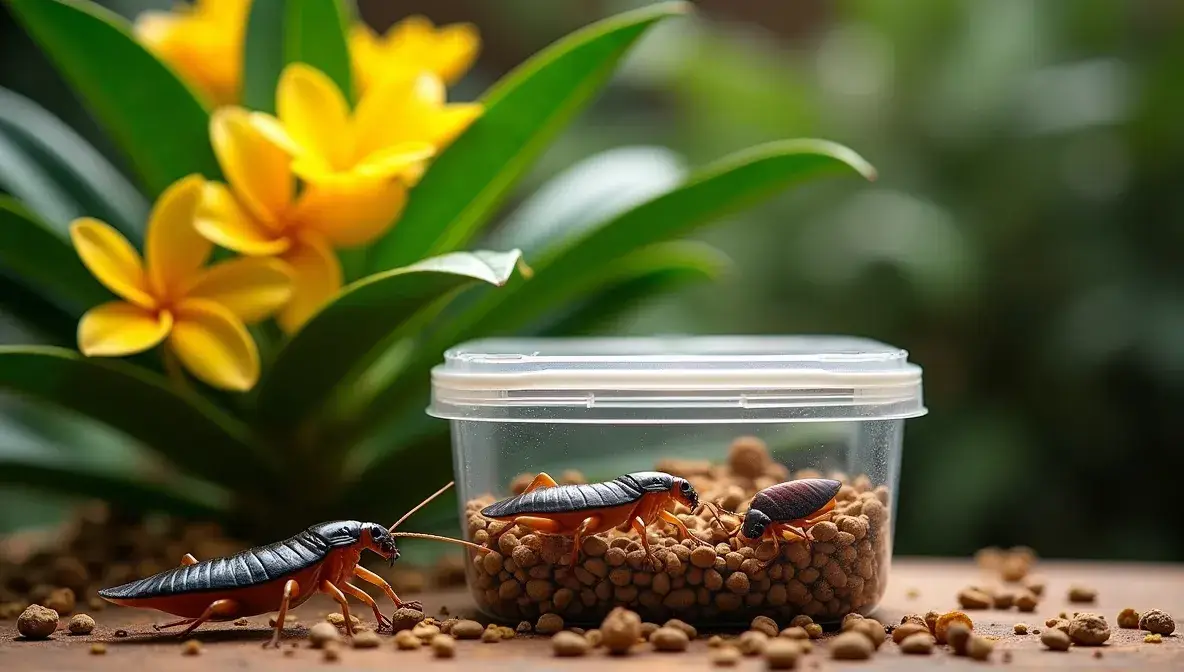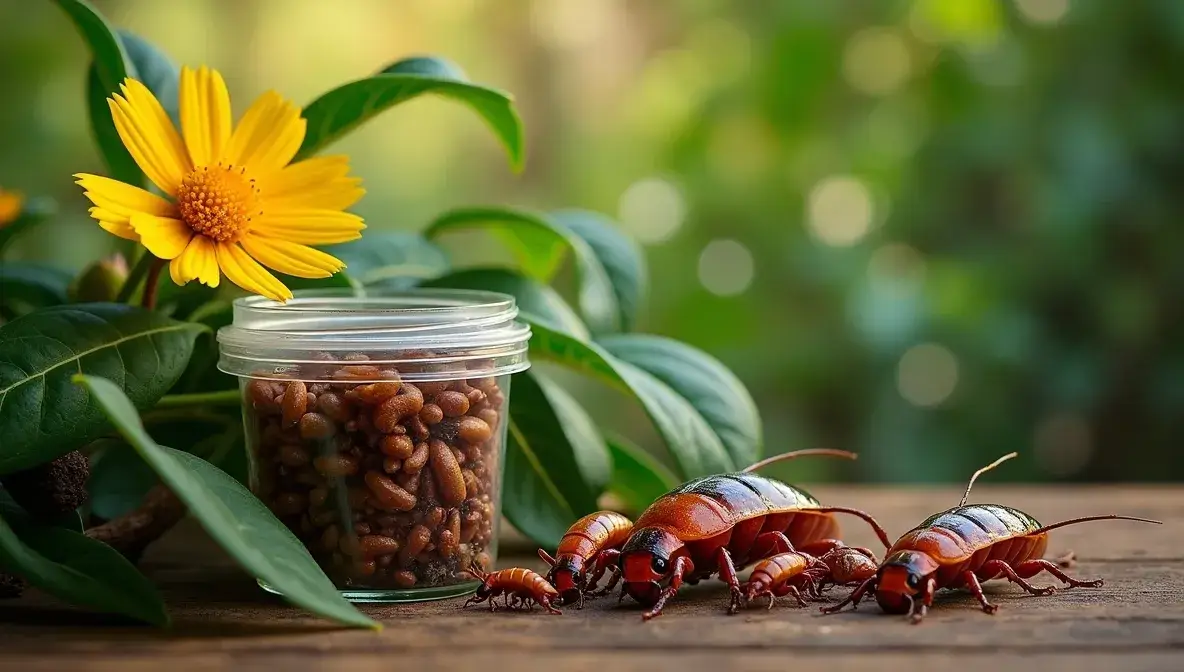If you’re looking for a reliable, nutritious feeder insect for your reptiles, you’ve likely heard of Dubia roaches. These hardy insects are a favorite among reptile keepers because they’re easy to care for, reproduce quickly, and provide high protein levels for your pets. Whether you’re considering starting your own colony for cost savings or to ensure a constant supply of feeders, learning how to grow Dubia roaches properly is crucial. In this guide, we’ll walk you through all the steps, tips, and insider knowledge you need to successfully raise these beneficial insects.
What Are Dubia Roaches and Why Are They Ideal Feeders?

Dubia roaches (scientific name: Blaptica dubia) are tropical, non-invasive roaches native to Central and South America. Unlike other types of roaches, they don’t climb smooth surfaces, don’t fly, and don’t have a strong odor, making them one of the cleanest and easiest feeder insects to manage.
What makes Dubia roaches stand out as feeder insects?
- Nutritional Value: They’re packed with protein (around 20–25% protein content) and low in fat, making them ideal for reptiles like bearded dragons, geckos, and monitor lizards.
- Ease of Breeding: With the right care, a small colony can multiply exponentially, providing a sustainable food source.
- Long Lifespan: Dubia roaches live up to 2 years, giving breeders plenty of time to establish a thriving colony.
- Low Maintenance: They require minimal cleaning, don’t escape easily, and are generally hardy insects.
Setting Up the Perfect Environment for Dubia Roaches
Creating the right environment is essential to keep your roaches healthy and encourage breeding. Let’s break it down into the key components:
Housing
Dubia roaches don’t require fancy housing, but the setup must meet their basic needs.
- Container: A sturdy plastic bin with smooth sides works best to prevent escape. A bin size of 20 gallons or larger is ideal for a small colony.
- Ventilation: Use a fine mesh or screen lid to allow airflow while preventing pests from getting in. You can cut holes in the lid and secure mesh over them.
- Hiding Spaces: Dubia roaches love to hide. Stack egg crates vertically inside the bin to maximize space and provide them with dark, comfortable hiding spots.
Temperature and Humidity
Temperature and humidity are critical factors for growing a healthy Dubia roach colony.
- Optimal Temperature: Keep the enclosure between 85°F and 95°F for breeding and general activity. Use a heat mat or ceramic heat emitter if necessary.
- Humidity Levels: Maintain humidity between 40% and 60%. Mist the enclosure lightly every few days to achieve this, but avoid making it too damp, as excess moisture can lead to mold and health issues.
Substrate (Optional)
While many breeders skip substrate for easy cleaning, you can use a thin layer of coconut fiber or paper towels if you prefer. Substrate can help retain humidity but requires regular cleaning.

Feeding Your Dubia Roaches
Proper nutrition is vital for healthy roaches and, in turn, for the reptiles consuming them.
What to Feed Dubia Roaches
Dubia roaches are omnivores and thrive on a variety of foods:
- Vegetables: Carrots, sweet potatoes, squash, and leafy greens.
- Fruits: Apples, oranges, bananas, and berries.
- Dry Foods: High-quality roach chow, fish flakes, or crushed dog food (avoid brands with high fat or artificial additives).
Gut-Loading for Reptile Nutrition
Gut-loading is the process of feeding your Dubia roaches nutrient-rich foods before offering them to your reptiles. This ensures your pets receive maximum nutrition. Ideal gut-loading foods include:
- Dark leafy greens (e.g., kale, collard greens).
- Fresh fruit slices.
- Whole grain oats or bran.
Water Availability
Dubia roaches get most of their moisture from fresh fruits and vegetables. However, you can also provide water crystals or a shallow dish with a sponge to prevent drowning.
Encouraging Breeding
If your goal is to grow a self-sustaining colony, you’ll need to encourage breeding.
Sex Ratio
Aim for a ratio of 1 male to 3–5 females. Too many males can stress the females and hinder breeding. You can identify males by their fully developed wings, while females have shorter wing stubs.
Breeding Conditions
Breeding occurs naturally when the environment meets their needs:
- Temperature: Keep the enclosure consistently warm (around 90°F).
- Food Supply: Ensure there’s always enough food and water.
- Space: Overcrowding can reduce breeding rates. Expand your enclosure or remove excess roaches if necessary.
Gestation and Nymphs
Female Dubia roaches give birth to live young (called nymphs) every 30–45 days. Nymphs are tiny and lighter in color but will darken as they grow. Provide ample hiding spots for the nymphs to thrive.
Common Challenges and Solutions
Even with proper care, you may encounter some issues while raising Dubia roaches. Here are common problems and how to fix them:
- Low Breeding Rates: Check temperature and humidity levels. Insufficient heat is the most common reason for poor breeding.
- Mold Growth: Remove uneaten food regularly and avoid over-misting. Ensure proper ventilation in the enclosure.
- Escaped Roaches: While rare, escapees can happen. Use a container with smooth sides and secure the lid tightly.
Benefits of Growing Your Own Dubia Roach Colony

Still on the fence about starting a Dubia roach colony? Here’s why it’s worth it:
- Cost Savings: Buying feeders regularly can get expensive, especially if you have multiple reptiles. A single colony can save you hundreds of dollars over time.
- Control Over Nutrition: When you raise your own roaches, you control their diet, ensuring optimal nutrition for your reptiles.
- Convenience: Never worry about running out of feeders or dealing with unreliable suppliers.
Quick Tips for Success
- Separate larger adults from nymphs to prevent overcrowding and competition.
- Use a thermometer and hygrometer to monitor temperature and humidity.
- Avoid feeding citrus fruits too often, as they can disrupt breeding.
- Clean the enclosure every 4–6 weeks to remove waste and prevent odor.
Conclusion
Growing Dubia roaches is a rewarding and cost-effective way to provide high-quality nutrition for your reptiles. By setting up the right environment, maintaining proper care, and encouraging breeding, you can establish a thriving colony in no time. Not only will your reptiles benefit from consistently gut-loaded feeders, but you’ll also save money and enjoy the convenience of having a self-sustaining food source.
Have you tried growing Dubia roaches, or are you considering starting a colony? Share your experiences or questions in the comments below! If you found this guide helpful, check out our other posts on reptile care and feeding tips Drguidez.
By following these steps, you’ll be well on your way to mastering the art of growing Dubia roaches and making informed decisions for your reptile’s health and well-being. Happy breeding!

Mark Manson is an expert blogger specializing in Dubia Roaches. He shares practical care tips, breeding insights, and feeding advice to help enthusiasts and reptile owners thrive.

